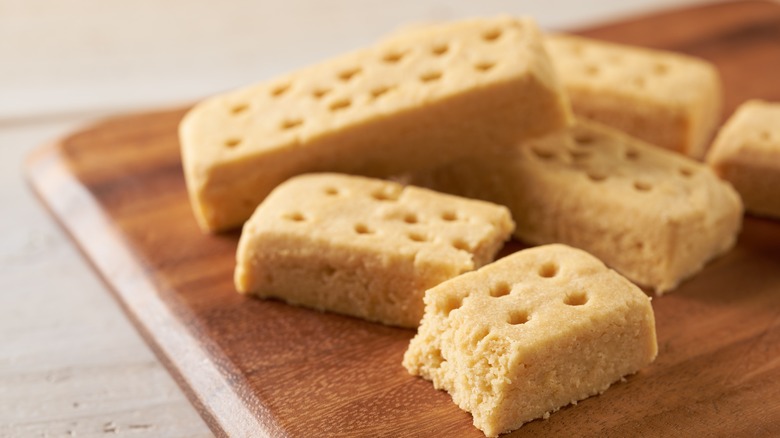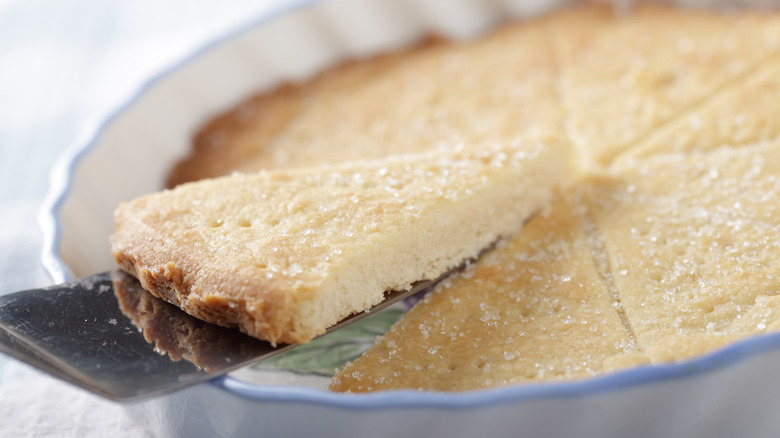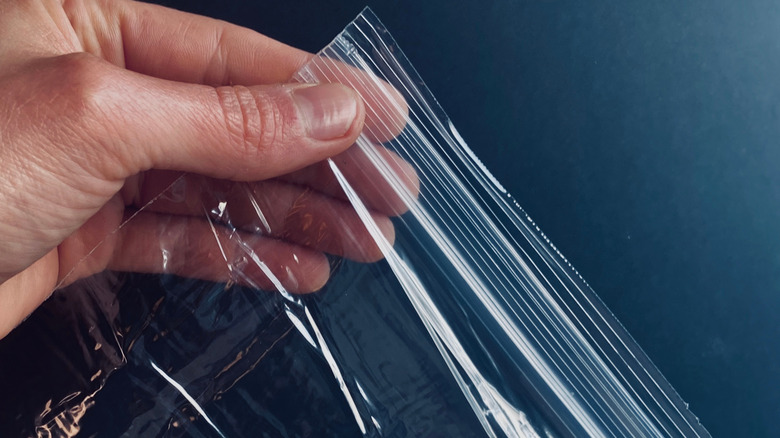The Key To Slicing Perfectly Smooth Scottish Shortbread Is Ridiculously Simple
Buttery, smooth, and irresistibly crumbly, Scottish shortbread — called "shortbread" to reference its high fat content — is a decadent treat fitting for countless occasions beyond its frequent association with Christmas holidays and weddings. Traditionally made with the simple sweet treat trifecta of butter, sugar, and flour, the modern iteration of the Scottish treat is often credited to Mary, Queen of Scots and the influence of French culinary techniques on classic Scottish recipes. For centuries, it has offered snackers a luxurious, melt-in-your-mouth decadence that simply cannot be duplicated.
When making your own shortbread, there are a myriad of tips and tricks for a smooth process, particularly as it relates to slicing your shortbread squares. When it comes to slicing shortbread — you have to know what to do, and more importantly when to do it. Slicing it is significantly easier if you cut it while it's still warm, as waiting until your shortbread cools can result in cracked, uneven squares. So this is one time it's okay to totally jump the gun and slice while warm for perfectly cut squares or strips you can then cool and dig into.
Making — and slicing — delicious shortbread
A delicious Scottish shortbread begins with using a quality butter. Since butter's flavor is on the forefront of any good shortbread recipe, choosing your butter carefully is paramount to a melt-in-your-mouth sweet treat. For best results, invest in a European butter, which has at least 82% butterfat and will lend a richer flavor and softer texture to your shortbread than its more neutrally-flavored American counterpart.
Equally important to using a quality butter is being careful how you handle your shortbread dough — you'll want to avoid overworking it, as you risk toughening your dough too much, which will result in hard, overly crumbly shortbread instead of its signature velvety decadence. Instead, mix only until your ingredients are combined, then leave that dough alone.
After baking your shortbread, slice it while it's still warm — this will ensure easy, even slicing. Feel free to use a sharp knife, a crinkle cutter, or even a pizza cutter for smoothest results, then cool your shortbread slices on a cooling rack. Alternatively, you can leave your shortbread in the pan to cool for a few hours once it's cut — but it's important to note that cooled shortbread breaks easily, so be sure to handle your slices gingerly when removing from the pan. And while fingers are the traditional shape for shortbread — and are seriously cute to boot — you can cut it however you want, so get creative. It'll taste just as good going down in any shape.
Storing your shortbread slices
Storing your sliced shortbread properly for maximum enjoyment is relatively simple if you keep in mind a few key things — like other cookies, shortbread should have limited exposure to moisture, so it needs to be kept in an airtight container, resealable plastic bag, or a cookie jar with a tight lid to preserve its freshness. But you'll want to be sure that the slices are completely cool before you place them in your container. Otherwise, the moisture from the heat will cause them to become soggy, and a batch of soggy shortbread is not on anyone's holiday list.
When packaged properly, you can store your shortbread at room temperature — in a cool, dry place — for up to a week, orfor about 10 days in the refrigerator. Need to freeze your shortbread for later? You can do so in your airtight container successfully — with layers separated by parchment paper or foil — for up to three months. Alternatively, you can wrap each slice in foil before freezing in your container, and enjoy later.


